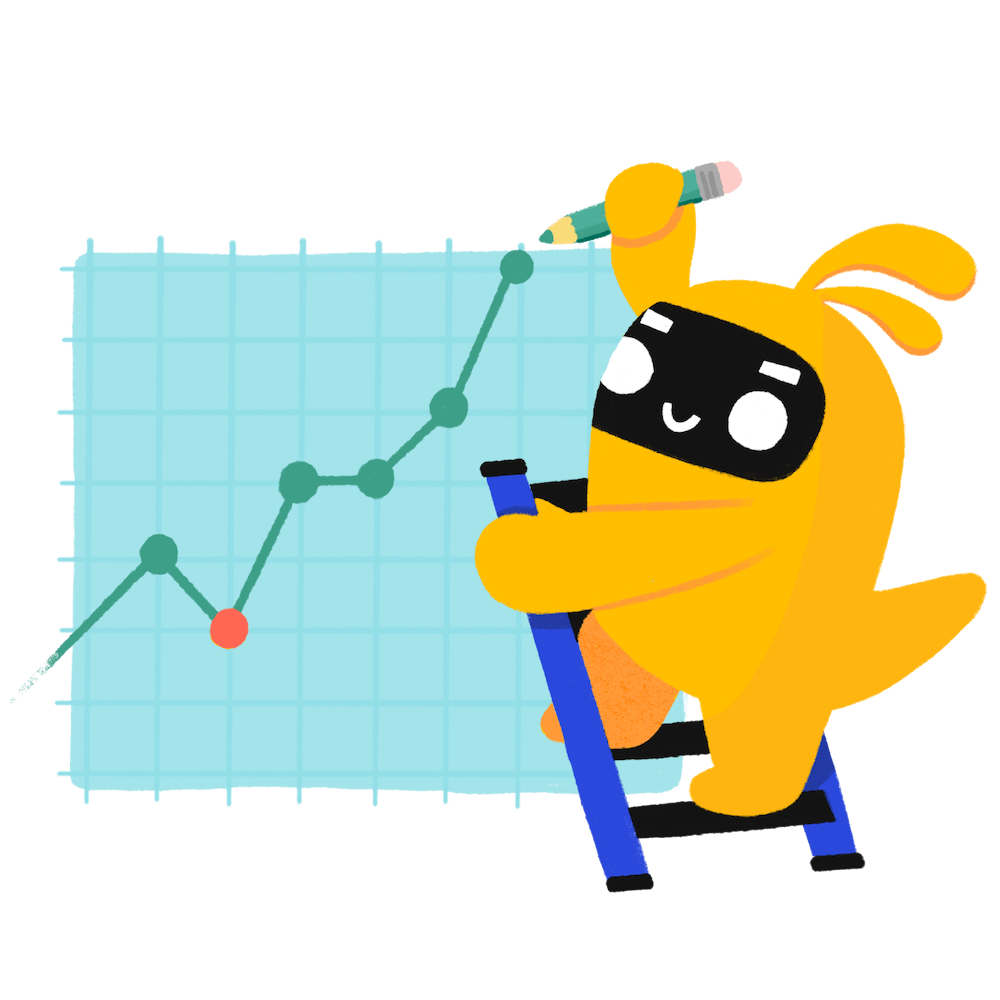2 customisable OKR examples for Training Facilitators
What are Training Facilitators OKRs?
The Objective and Key Results (OKR) framework is a simple goal-setting methodology that was introduced at Intel by Andy Grove in the 70s. It became popular after John Doerr introduced it to Google in the 90s, and it's now used by teams of all sizes to set and track ambitious goals at scale.
How you write your OKRs can make a huge difference on the impact that your team will have at the end of the quarter. But, it's not always easy to write a quarterly plan that focuses on outcomes instead of projects.
We've tailored a list of OKRs examples for Training Facilitators to help you. You can look at any of the templates below to get some inspiration for your own goals.
If you want to learn more about the framework, you can read our OKR guide online.
Building your own Training Facilitators OKRs with AI
While we have some examples available, it's likely that you'll have specific scenarios that aren't covered here. You can use our free AI generator below or our more complete goal-setting system to generate your own OKRs.
Feel free to explore our tools:
- Use our free OKR generator
- Use Tability, a complete platform to set and track OKRs and initiatives, including a GPT-4 powered goal generator
Our customisable Training Facilitators OKRs examples
You will find in the next section many different Training Facilitators Objectives and Key Results. We've included strategic initiatives in our templates to give you a better idea of the different between the key results (how we measure progress), and the initiatives (what we do to achieve the results).
Hope you'll find this helpful!
1. OKRs to launch data-centric beta marketplace
Launch data-centric beta marketplace
Secure 20+ varied data products and services for marketplace launch
Develop and conduct a robust security review before launch
Identify and list potential data products and services for marketplace availability
Initiate partnerships or contracts with selected data product providers
Create and deliver 5 skills building programs for marketplace users
Develop detailed curriculum for each program
Schedule and facilitate skill-building sessions
Identify required skills for marketplace users
Finalize and test platform features, ensuring 98% operational uptime
Conduct comprehensive testing of all platform features
Implement necessary updates and fixes for identified issues
Monitor and ensure 98% platform operational uptime
2. OKRs to qR code integration
Successfully integrate QR code technology into our product offering
Test and ensure 99% accurate scanning of integrated QR codes
Develop rigorous testing protocols for QR code accuracy
Review and analyse test results to identify improvements
Conduct repeated accuracy tests on integrated QR codes
Train 100% of our team on QR code product feature updates and functionalities
Identify required updates and functionalities for QR code product training
Develop comprehensive training materials for team members
Schedule and conduct training sessions for all team members
Implement QR code functionality on at least 90% of our products
Design QR codes for each eligible product
Research and select a suitable QR code generation system
Integrate QR codes with product packaging design
Training Facilitators OKR best practices to boost success
Generally speaking, your objectives should be ambitious yet achievable, and your key results should be measurable and time-bound (using the SMART framework can be helpful). It is also recommended to list strategic initiatives under your key results, as it'll help you avoid the common mistake of listing projects in your KRs.
Here are a couple of best practices extracted from our OKR implementation guide 👇
Tip #1: Limit the number of key results
The #1 role of OKRs is to help you and your team focus on what really matters. Business-as-usual activities will still be happening, but you do not need to track your entire roadmap in the OKRs.
We recommend having 3-4 objectives, and 3-4 key results per objective. A platform like Tability can run audits on your data to help you identify the plans that have too many goals.
 Tability's audit dashboard will highlight opportunities to improve OKRs
Tability's audit dashboard will highlight opportunities to improve OKRsTip #2: Commit to weekly OKR check-ins
Don't fall into the set-and-forget trap. It is important to adopt a weekly check-in process to get the full value of your OKRs and make your strategy agile – otherwise this is nothing more than a reporting exercise.
Being able to see trends for your key results will also keep yourself honest.
 Tability's check-ins will save you hours and increase transparency
Tability's check-ins will save you hours and increase transparencyTip #3: No more than 2 yellow statuses in a row
Yes, this is another tip for goal-tracking instead of goal-setting (but you'll get plenty of OKR examples above). But, once you have your goals defined, it will be your ability to keep the right sense of urgency that will make the difference.
As a rule of thumb, it's best to avoid having more than 2 yellow/at risk statuses in a row.
Make a call on the 3rd update. You should be either back on track, or off track. This sounds harsh but it's the best way to signal risks early enough to fix things.
How to turn your Training Facilitators OKRs in a strategy map
Quarterly OKRs should have weekly updates to get all the benefits from the framework. Reviewing progress periodically has several advantages:
- It brings the goals back to the top of the mind
- It will highlight poorly set OKRs
- It will surface execution risks
- It improves transparency and accountability
We recommend using a spreadsheet for your first OKRs cycle. You'll need to get familiar with the scoring and tracking first. Then, you can scale your OKRs process by using a proper OKR-tracking tool for it.
 Tability's Strategy Map makes it easy to see all your org's OKRs
Tability's Strategy Map makes it easy to see all your org's OKRsIf you're not yet set on a tool, you can check out the 5 best OKR tracking templates guide to find the best way to monitor progress during the quarter.
More Training Facilitators OKR templates
We have more templates to help you draft your team goals and OKRs.
OKRs to boost stealth bed and chair pad sales by 20%
OKRs to implement robust data backup and recovery
OKRs to increase overall company revenue
OKRs to improve developer experience by improvign dev speed
OKRs to enhance capital utilization efficiency of auto-parts trading company
OKRs to ensure successful completion and delivery of client commitments
OKRs resources
Here are a list of resources to help you adopt the Objectives and Key Results framework.
- To learn: What is the meaning of OKRs
- Blog posts: ODT Blog
- Success metrics: KPIs examples
Create more examples in our app
You can use Tability to create OKRs with AI – and keep yourself accountable 👀
Tability is a unique goal-tracking platform built to save hours at work and help teams stay on top of their goals.
 1 Create your workspace
1 Create your workspace 2 Build plans in seconds with AI
2 Build plans in seconds with AI 3Track your progress
3Track your progress